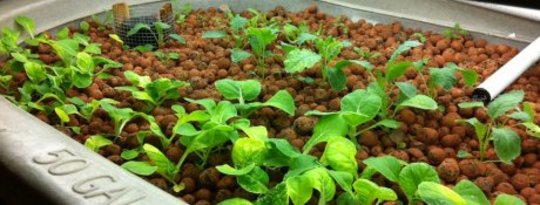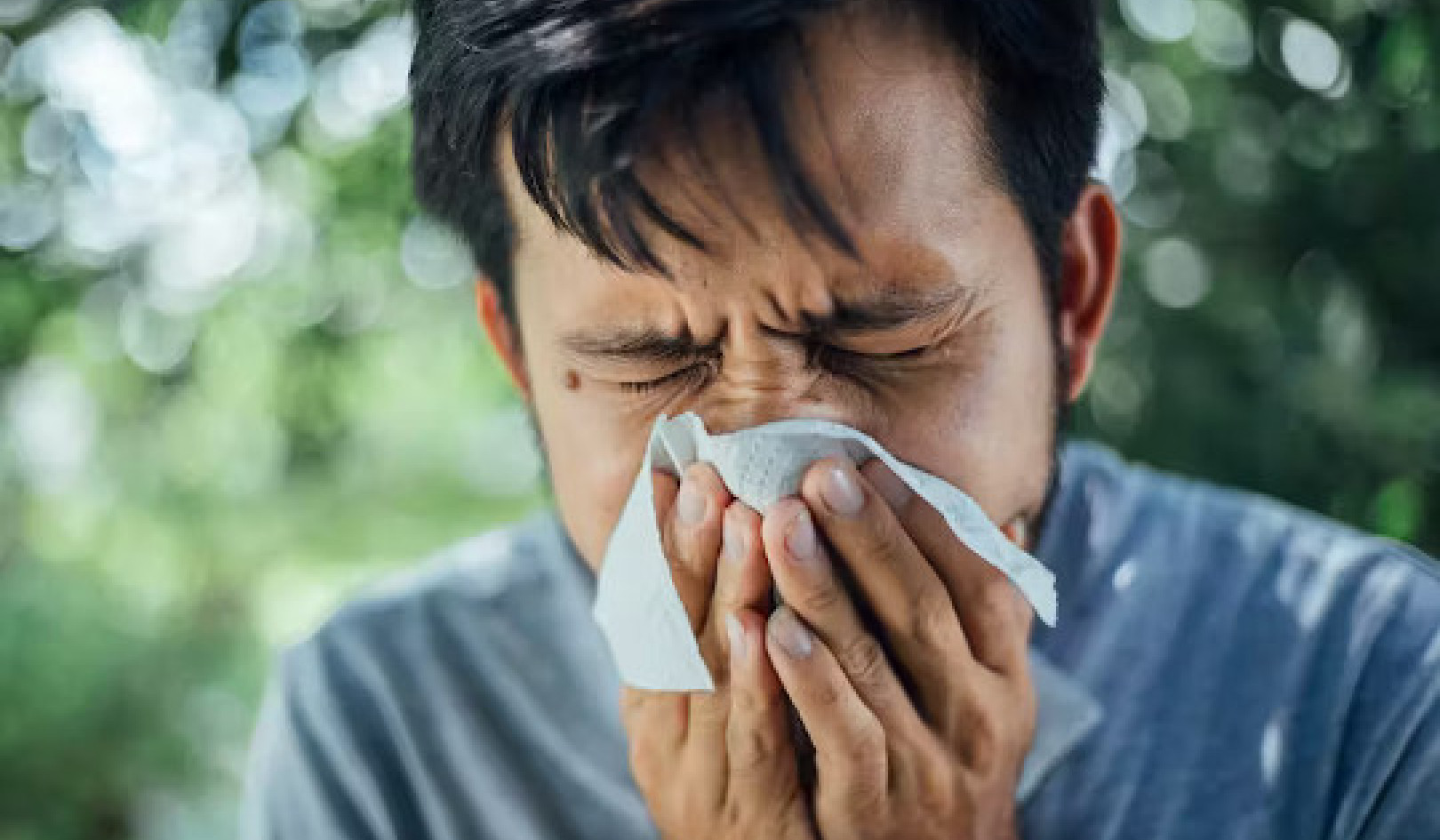
Here in the US, only 10 percent of the farmed fish we eat is produced domestically. China produces 62 percent of the farm-raised fish in the world today.
While aquaponics can't address the dual demand pressures of population growth and increasing global standards of living, it does offer many exciting solutions to many of the production problems we face.
Petroleum Use: Aquaponics vs. Traditional Agriculture
Because there is no soil to till, there is no longer a need to use tractors and gas-powered farm equipment. Commercial aquaponics operations typically employ either a raft method, where the plants float in water until they are harvested, or media. Neither requires the kind of labor that soil-based farming does.
Since there are no weeds in aquaponics, there is no need to mechanically remove weeds or spray herbicides. Since the plant nutrients and water are both integral to an aquaponics system, there is no need for petroleum-based fertilizers or truck-mounted irrigators. Since aquaponically grown plants are either growing in waist-high grow beds or in rafts floating in water, they are much easier to harvest than soil-grown plants.
Get The Latest By Email
Location, Location, Any Location!
Aquaponic systems can be set up anywhere you have, or can artificially establish, an appropriate climate for the plants. Poor soil? No problem. Aquaponics is particularly well adapted to providing food to local communities that might not otherwise have fertile land available for growing.
Since over half of humanity now lives in our cities, it is important that food-growing facilities be established where the people are, rather than trucking food in from distant locations. Currently, most of our produce is shipped hundreds, if not thousands of miles. Imagine how much fuel could be saved if we actually grew our food in our city centers.
Water Use: Aquaponics vs. Traditional Agriculture
Modern agricultural methods waste an incredible amount of water. Water is either sprayed or flooded through fields where a huge amount either evaporates into the air on a hot day, or seeps past the plant roots and into the water table, pulling chemical fertilizers, herbicides and pesticides down with it.
Aquaponics, on the other hand, is a closed, recirculating system. The only water that leaves the system is the small amounts taken up by the plants (some of which transpires through the leaves) or that evaporates from the top of the tank. That's it. Aquaponics uses less than a tenth the amount of water a comparable soil-based garden uses.
Aquaponics is even more water thrifty than it's horticultural cousin, hydroponics. Since aquaponics is an organic ecosystem in which the nutrients are balanced naturally, there is never any toxic buildup of nutrients. In fact, because the water in an aquaponics system is so full of healthy biology, I recommend that if possible, you never discharge the water from your fish tank. The only reason why you ever would is if something caused extreme amounts of ammonia to overwhelm your biofilter's ability to convert it and you therefore needed to do a partial water change to dilute the ammonia. An example of this would be a dead, decomposing fish that you were unaware of. Even if such a rare event were to occur, the discharge from your aquaponics system is completely organic and will only benefit any soil lucky enough to be watered by it.
Climate Change: Aquaponics vs. Traditional Agriculture
 An aquaponics system is a food-growing system that could have zero impact on our environment, especially if the pumps and heaters are powered through renewable energy sources. Except for purely wild food-growing systems, such as the ocean, and most permaculture techniques, no other food system that I know of can make that claim.
An aquaponics system is a food-growing system that could have zero impact on our environment, especially if the pumps and heaters are powered through renewable energy sources. Except for purely wild food-growing systems, such as the ocean, and most permaculture techniques, no other food system that I know of can make that claim.
On the other hand, traditional agriculture is the single largest contributor of CO2 emissions, while simultaneously contributing to the ongoing shrinking of the earth's CO2 filter through the need for more and more land for growing crops and raising cattle. The main pollutant sources are CO2 emissions from all the petroleum being used in farm production and food transportation, methane from cattle production, and nitrous oxide from over-fertilizing. Aquaponics requires none of these inputs. Petroleum needs in aquaponics range from much less to zero. Fish don't produce methane as cattle do, and there is no chance of over-fertilizing an aquaponics system.
Aquaponics in the City's Old Factories and Warehouses
Perhaps most importantly, aquaponic systems can be started anywhere. So now instead of clearing jungles and forests we can instead focus on our urban centers and begin to think of old factory and warehouse buildings as the farms of our future. While perhaps not suited to growing vast fields of grain, aquaponics can now grow any vegetable and many types of fruit crops, and do it in a way that is even more productive on a square foot basis, even in an urban setting.
Aquaponics can produce 50,000 pounds of tilapia and 100,000 pounds of vegetables per year in a single acre of space. By contrast, one grass-fed cow requires eight acres of grassland. Another way of looking at it is that over the course of a year, aquaponics will generate about 35,000 pounds of edible flesh per acre, while the grass-fed beef will generate about 75 pounds in the same space.
Being Self-Sufficient in the City
Is the notion of producing at least some portion of our food in our urban centers a science fiction fantasy? Not at all. In fact, in her essay "Reconsidering Cities," author Sharon Astyk pointed out that it isn't as unusual as you might think for city dwellers to grow a meaningful portion of the food they eat. She explains that Hong Kong and Singapore already both produce more than 20 percent of their meat and vegetables within the city limits.
In 2002, with more than six million people, Hong Kong was producing 33 percent of the produce, 14 percent of the pigs, 36 percent of the chickens and 20 percent of the farmed fish eaten in the city limits.
©2011 by Sylvia Bernstein. All rights reserved.
Reprinted with permission of the publisher,
New Society Publishers. http://newsociety.com
This article was adapted with permission from the book:
Aquaponic Gardening: A Step-By-Step Guide to Raising Vegetables and Fish Together
by Sylvia Bernstein.
 A combination of aquaculture and hydroponics, aquaponic gardening is an amazingly productive way to grow organic vegetables, greens, herbs, and fruits, while providing the added benefits of fresh fish as a safe, healthy source of protein. Aquaponic Gardening is the definitive do-it-yourself home manual, focused on giving you all the tools you need to create your own aquaponic system and enjoy healthy, safe, fresh, and delicious food all year round.
A combination of aquaculture and hydroponics, aquaponic gardening is an amazingly productive way to grow organic vegetables, greens, herbs, and fruits, while providing the added benefits of fresh fish as a safe, healthy source of protein. Aquaponic Gardening is the definitive do-it-yourself home manual, focused on giving you all the tools you need to create your own aquaponic system and enjoy healthy, safe, fresh, and delicious food all year round.
Click here for more info and/or to order this book.
About the Author
 Sylvia Bernstein is the president and founder of The Aquaponic Source and the Chairman of the U.S. Chapter of the Aquaponics Association. She also manages AquaponicsCommunity.com, the largest US-based online community site dedicated to aquaponic gardening. An experienced speaker and internationally recognized expert on aquaponic gardening, Sylvia writes and blogs on the subject for the Aquaponic Gardening Blog, Growing Edge and more. Her inspiration is a large, thriving aquaponic setup in her backyard greenhouse in Boulder, CO powered by tilapia, catfish, and other creatures-that-swim.
Sylvia Bernstein is the president and founder of The Aquaponic Source and the Chairman of the U.S. Chapter of the Aquaponics Association. She also manages AquaponicsCommunity.com, the largest US-based online community site dedicated to aquaponic gardening. An experienced speaker and internationally recognized expert on aquaponic gardening, Sylvia writes and blogs on the subject for the Aquaponic Gardening Blog, Growing Edge and more. Her inspiration is a large, thriving aquaponic setup in her backyard greenhouse in Boulder, CO powered by tilapia, catfish, and other creatures-that-swim.








